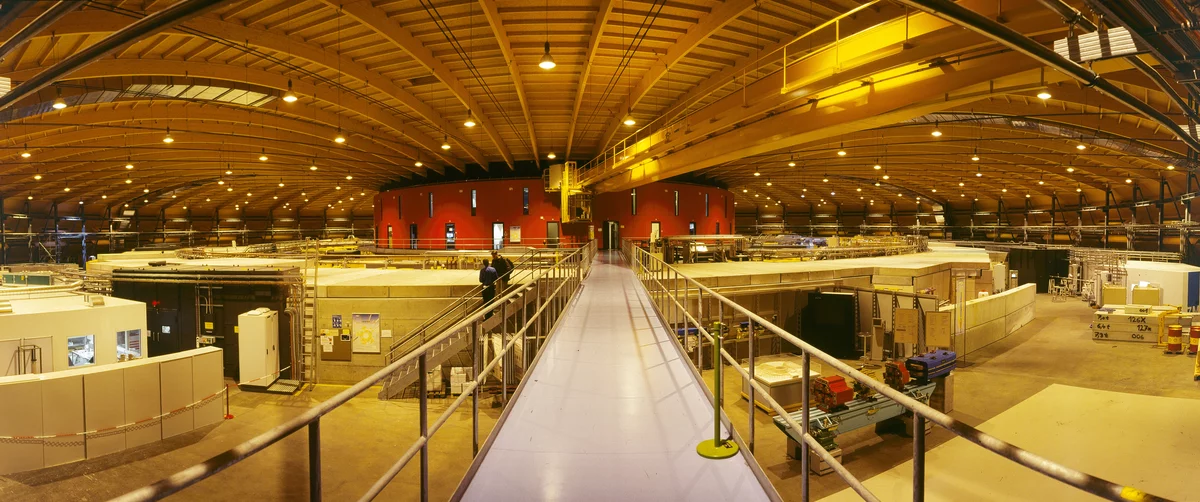The Paul Scherrer Institute congratulates Professor Venkatraman Ramakrishnan on the Nobel Prize in Chemistry. Ramakrishnan is a long-term user of the Swiss Light Source SLS at the Paul Scherrer Institut in Switzerland. He used this facility for his prize winning studies on the structure of the ribosome.
Venkatraman Ramakrishnan from the MRC Laboratory of Molecular Biology in Cambridge, UK, shares the prize with Thomas A. Steitz, Yale University, New Haven, USA, and Ada E. Yonath, Weizmann Institute of Science, Rehovot, Israel for research into the structure and function of the ribosome, a large complex molecule which can be seen as the factory for the production of proteins, the latter being the molecular building blocks determining our life processes.
For the determination of the three-dimensional structure of these large molecules, researchers generally employ a technique known as X-ray crystallography: An X-ray beam passes through a crystal composed of the molecules under investigation and a detector placed behind the sample records a characteristic pattern. A detailed analysis of this diffraction pattern allows scientists to determine the positions of the atoms within the molecule. The best diffraction results are generally achieved at so-called third-generation synchrotron radiation sources.
The Swiss Light Source at the Paul Scherrer Institut is one such third-generation source. It operates three advanced protein crystallography beam lines which provide optimal conditions for structure determinations of large bio-molecules such as the ribosome. Unique are the X-ray pixel detectors developed at the Paul Scherrer Institut specifically for this purpose.
X-rays at the Swiss Light Source are generated by electrons travelling almost at the speed of light on a circular trajectory with a circumference of 288 meters. The X-ray radiation produced by such large facilities is much more brilliant than radiation coming out of an ordinary X-ray tube. The SLS is an ‘open access’ facility, i.e. it provides access to users of all nationalities, based on the quality of their research proposals as judged by an international panel. Since 2003 the group of Venkatraman Ramakrishnan has been visiting the SLS for extended measurement campaigns. Experiments at the SLS as well as experiments by this group at other sources resulted in the key publications which led to the Nobel Prize.
The Paul Scherrer Institute develops, builds and operates large and complex research facilities, and makes them available to the national and international scientific community. Its own work concentrates on solid-state research and material sciences, elementary particle physics, biology and medicine, energy research and environmental research. With a staff of 1300 and an annual budget of approximately CHF260 million, this is Switzerland’s largest research institution.
Contacts:
Professor Dr. Friso van der Veen, Paul Scherrer Institut, Department Head Synchrotron Radiation and Nanotechnology,Tel: +41 56 310 5118, +41 79 5936509, e-mail: friso.vanderveen@psi.ch (German, English, Dutch)
Dr. Vincent Olieric, Paul Scherrer Institut, Scientist at the beamline X06SA,
Tel: +41 56 310 5233, e-mail: vincent.olieric@psi.ch (French, English)
Publications:
Publications based on work performed by the group of Venkatraman Ramakrishnan at the SLS which contain results relevant to the Nobel Prize in Chemistry 2009:Rebecca M Voorhees, Albert Weixlbaumer, David Loakes, Ann C Kelley & V Ramakrishnan;
Insights into substrate stabilization from snapshots of the peptidyl transferase center of the intact 70S ribosome;
Nature Structural and Molecular Biology, Volume 16, Nummer 5, Mai 2009, S. 528ff.
Albert Weixlbaumer, Hong Jin, Cajetan Neubauer, Rebecca M. Voorhees, Sabine Petry, Ann C. Kelley, Venki Ramakrishnan;
Insights into Translational Termination from the Structure of RF2 Bound to the Ribosome;
Science, Volume 322, 7. November 2008, S. 953ff.
Maria Selmer, Christine M. Dunham, Frank V. Murphy IV, Albert Weixlbaumer, Sabine Petry, Ann C. Kelley, John R. Weir, V. Ramakrishnan;
Structure of the 70S Ribosome Complexed with mRNA and tRNA,
Science, Volume 313 29. September 2006, S. 1935 ff

